Contact us today:

(847) 934-4500
tdaro@bernardandcompany.com

Contact us today:
(847) 934-4500
tdaro@bernardandcompany.com
Universities and technical schools trying to keep up with advances in digital manufacturing often find themselves behind industry. However, I was privileged to visit one university, the University South Carolina, which will now be an important exception. Founded in 1801, USC is one of the oldest universities in the US with a history of creating the most innovative learning programs dating back to its first curriculum obtained from Oxford University. Today, USC is establishing a one of a kind Digital Factory Lab that combines technology and coolness to inspire and educate its students.
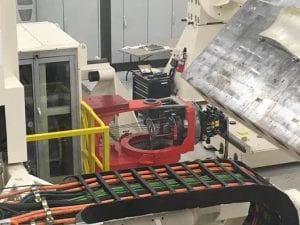 This past week, Siemens announced a partnership to help the University of South Carolina to accomplish this goal with an in-kind grant of hardware and software. “Welcome to Brain Power USA! Siemens is investing $628 million in high tech training for 4th industrial revolution jobs in South Carolina,” said Henry McMaster, South Carolina Governor. By providing students with this hands-on experience on software and hardware across USC’s engineering curriculum and in research programs, Siemens is helping prepare a highly-skilled STEM workforce for the advanced manufacturing industry, including the aerospace industry, which has experienced an 11.4% employment growth rate in South Carolina since 2010.
This past week, Siemens announced a partnership to help the University of South Carolina to accomplish this goal with an in-kind grant of hardware and software. “Welcome to Brain Power USA! Siemens is investing $628 million in high tech training for 4th industrial revolution jobs in South Carolina,” said Henry McMaster, South Carolina Governor. By providing students with this hands-on experience on software and hardware across USC’s engineering curriculum and in research programs, Siemens is helping prepare a highly-skilled STEM workforce for the advanced manufacturing industry, including the aerospace industry, which has experienced an 11.4% employment growth rate in South Carolina since 2010.
Ramy Harik is one of the professors at USC and he told me that these new resources will be put to good use. Already his students have been involved in working with composites, designing new ways of analyzing data for the helicopter AH-64 Apache airframe and developing insights into that aircraft’s mechanical operation for the Army. More innovations are sure to come. For instance, beginning this fall students will also be able to pursue a major in aerospace engineering.
In recent years, the state of South Carolina has become a magnet for sophisticated manufacturing particularly in aerospace, automotive and tire. As a result of working with these companies to deploy high-tech manufacturing and by supporting vocational learning in the state through USC’s College of Engineering and Computing and the McNAIR Center for Aerospace Innovation and Research, USC has grown into a major research university. Specifically, the McNAIR Center is aligned with two dozen educational and government partners, and a group of industry partners that include The Boeing Company, Fokker Aerostructures, KUKA Robotics, Ingersoll Machine Tools, Gulfstream and more.
 The recent gift by Siemens to University of South Carolina will contribute to the state’s overall goal to become the smartest manufacturing state in the United States. I know this is not only important to the Governor of South Carolina, but also to the USC President Harris Pastides who said, “We’re proud that our researchers and students at the College of Engineering and Computing, McNAIR Aerospace Center and the entire USC system, will play a role in discovering new manufacturing technologies and will be better prepared to take on the jobs of tomorrow in South Carolina and beyond.”
The recent gift by Siemens to University of South Carolina will contribute to the state’s overall goal to become the smartest manufacturing state in the United States. I know this is not only important to the Governor of South Carolina, but also to the USC President Harris Pastides who said, “We’re proud that our researchers and students at the College of Engineering and Computing, McNAIR Aerospace Center and the entire USC system, will play a role in discovering new manufacturing technologies and will be better prepared to take on the jobs of tomorrow in South Carolina and beyond.”
To date, South Carolina’s business, education and state government partnerships have created jobs for more than 55,000 South Carolinians in the larger aerospace industry. As Raj Batra, President, Siemens Digital Factory Division, U.S., said, “Aerospace companies throughout South Carolina are heavily reliant on automation and digitalization as well as well-trained employees. Our partnership with the University of South Carolina will provide valuable experiential training with both software and hardware, providing the next generation workforce with the skills they need to be successful.”
Far from lagging, educators in South Carolina are working hard to stay out front. While I was at dinner, USC’s Hossein Haj-Hariri, Dean of the College of Engineering and Computing, told me “We are going to work very hard to make this the best investment that Siemens has ever made.” I am proud to be part of a company that will match that enthusiasm and make this a program known for enabling students to be competitive for jobs throughout the world.
Governor Henry McMaster, we are ready to help you build the workforce of tomorrow.
Siemens Industry, Inc.
Alisa Coffey
(678) 427-8319
alisa.coffey@siemens.com
About Siemens USA
Siemens Corporation is a U.S. subsidiary of Siemens AG, a global powerhouse focusing on the areas of electrification, automation and digitalization. One of the world’s largest producers of energy-efficient, resource-saving technologies, Siemens is a leading supplier of systems for power generation and transmission as well as medical diagnosis. With approximately 348,000 employees in more than 190 countries, Siemens reported worldwide revenue of $86.2 billion in fiscal 2015. Siemens in the USA reported revenue of $22.4 billion, including $5.5 billion in exports, and employs approximately 50,000 people throughout all 50 states and Puerto Rico.
The Modular Tire Measurement System (MTMS) is a tire uniformity, dynamic tire balance measurement and tire geometry inspection system combined in a single unit for optimum performance, minimal manpower hours and optimum floorspace utilization in tire plant facilites; system combines Micro-Poise tire measurement technology with advanced Siemens servo motors, drives and TIA Portal PLCs plus enhanced communications protocol to provide the best measurement and cycle time on the market.
Micro-Poise Measurement Systems, an Ametek company with over 90 years experience in service to the tire and auto industries and located in Streetsboro, Ohio, today announces plans to replace an existing tire measurement system at a production facility of a major American tire builder. According to John Clark, Director of Product Management for new machinery at Micro-Poise, the customer presented Micro-Poise with several challenges, including the replacement of an existing system within the same footprint, while providing the customer with the most advanced tire measurement and data communications technologies available. The selection of the MTMS from Micro-Poise will afford the end user complete tire testing in one unit, with the best measurement quality and cycle time available, while also providing a reduced footprint for optimum utilization of floor space and reduced manpower hours required.
The MTMS combines three proprietary technologies into a single system, including Micro-Poise ASTEC™ FX tire uniformity measurement, AkroDYNE™ FX dynamic balance measurement and TGIS-SL® tire geometry inspection. The resulting advantages for the end user, according to company sources, will be a minimum tire testing cycle time, reduction of manpower hours, installation of the entire system within the footprint of the existing D70 system installed globally at numerous tire plants and reduced downtime, due to the materials handling configuration and transfer mechanisms on the MTMS.
To help produce the required system, Micro-Poise engineering has turned to its longtime partner Siemens for assistance with the motion and machine control, plus a communications platform that will seamlessly transmit all data gathered upstream to the end user’s production management team. The Siemens product and software support onboard the MTMS will include TIA Portal Simatic S7 PLCs, Sinamics drives, Simotics motors, advanced fault detection and alarm sequencing, diagnostic prioritization software on the HMI for faster recognition by the operators, higher levels of data gathering for production management analysis and a seamless Profinet/Ethernet communications platform.
The new MTMS is currently in the build and test phases at Micro-Poise, with delivery to the customer slated for the Fall of 2016. During early 2017, additional linking of the machine to the entire production protocol will occur.
The main components of the MTMS design include:
The Modular Tire Measurement System (MTMS) 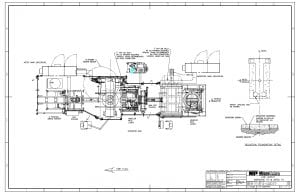 from Micro-Poise combines tire uniformity, dynamic balance measurement and tire geometry inspection into a single unit with full transfer mechanisms to speed cycle time, reduce manpower hours and conserve floor space. In its most efficient configuration, the total system cycle time is said to be the fastest in the industry. In addition, each individual measurement station insures the best measurement with no compromise in precision and accuracy. Siemens motion control technologies and software are key to overall machine performance and data communications, according to Micro-Poise sources.
from Micro-Poise combines tire uniformity, dynamic balance measurement and tire geometry inspection into a single unit with full transfer mechanisms to speed cycle time, reduce manpower hours and conserve floor space. In its most efficient configuration, the total system cycle time is said to be the fastest in the industry. In addition, each individual measurement station insures the best measurement with no compromise in precision and accuracy. Siemens motion control technologies and software are key to overall machine performance and data communications, according to Micro-Poise sources.
Contact for journalists:
Siemens Industry, Inc.
Alisa Coffey
(678) 427-8319
alisa.coffey@siemens.com
Siemens Industry, Inc.
Hollie Davis
(770) 751-4882
hollie.davis@siemens.com
For more information on this news release, interested parties may also contact:
AMETEK Micro-Poise Measurements Systems
555 Mondial Parkway
Streetsboro, OH 44241
Phone: (330) 541-9100
Stacey Urdiales, Marketing Services & Documentation Manager
stacey.urdiales@ametek.com
About Siemens USA
Siemens Corporation is a U.S. subsidiary of Siemens AG, a global powerhouse focusing on the areas of electrification, automation and digitalization. One of the world’s largest producers of energy-efficient, resource-saving technologies, Siemens is a leading supplier of systems for power generation and transmission as well as medical diagnosis. With approximately 348,000 employees in more than 190 countries, Siemens reported worldwide revenue of $86.2 billion in fiscal 2015. Siemens in the USA reported revenue of $22.4 billion, including $5.5 billion in exports, and employs approximately 50,000 people throughout all 50 states and Puerto Rico.
Machine builder utilizes Siemens hardware, software and communications platform on lines up to 11 layers of co-extrusion; achieving <1ºF of temp variation
Hosokawa Alpine American (Natick, Massachusetts) is a leading supplier of blown film extrusion systems to the North American plastics industry; with standard lines ranging from single-layer to 9-layer co-extrusion. The company recently rolled out its new 11-Layer X-Die line, featuring an advanced zone temperature control system that enables faster changes in recipe and data acquisition to allow on-the-fly adjustments for enhanced production performance. A recent installation of this system at a large multi-national Blown Film Company is already yielding trackable performance improvements at their plant.
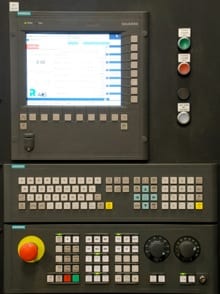
Hosokawa Alpine blown film system, the X-Die with 11 lines
As Alpine’s VP of Engineering Jay Ragusa observes, “We had a very successful machine design from the 1990’s and it had performed extremely well, but we saw dramatic improvements in new controls and data transmission technology from our longtime partner Siemens together with their local distributor, Dittman & Greer (Middletown, Connecticut), a specialist in electric temperature systems and machine controls.” Among these advancements, Ragusa notes, are a new zone temperature control system, as well as the Box PC with full automation and visualization software onboard running with WinCC.
Alpine had a “light bulb” moment, as Ragusa explains. “We quickly realized this new system would give us the ability to design a machine with a complete zone temperature control system and remote I/O, plus the necessary hardware and touchscreen HMI to give operators and production management an entirely new approach to in-process control and product quality monitoring”.
The company conducted its due diligence, calling in various competitors for the business. Thorough testing in the Alpine lab pilot plant was conducted, with strong emphasis on component failure analysis, system fault detection and the robust qualities of the competing systems for 24/7 use in the harsh environment of the blown film industry.
“Beyond those benchmarks of evaluation,” Ragusa continues, “we were seeking a system with enhanced flexibility, so we could provide our customers a better way to change recipes in a quicker, more efficient manner, while maintaining a very high degree of product quality.”

Siemens motor and drive assembly, plus PLC and HMI, control the processing and allow fast recipe changes.
After the completed testing and evaluation process in-house at Alpine, the decision was made to move forward with the Siemens system, comprising a new zone temperature control, Profinet communication platform, motors, drives, PLC and touchscreen HMI.
As the new system and other improvements were implemented into the first machine built and test-run at Alpine, a documented higher yield was achieved, with a higher degree of control accuracy. Ragusa notes there is an additional benefit of real-time monitoring and adjustment of all machine conditions.
This new machine included up to 120 separate temperature control zones. According to Ragusa typical systems allow for a 2º-3ºF variation in zone temperatures; with the new system that variation is reduced to less than 1ºF.
Jay Ragusa also details other system improvements made by Alpine on the new machine. “The new industrial flat panel on the PC has a wider screen for easy viewability. Plus, our older system, while modular, had little remote I/O and the new system brings us that benefit, too. The auto-tune function, combined with the better CPU in the PLC, gives us a much stronger package of internal software in combination with hardware. Since we were making the transition within a Siemens protocol, no significant software conversion was required and all data feeds continue on Profinet.”

A temperature accuracy better than 1ºF per zone yields superior, consistent quality in blown films.
Data transmission overall has also improved, he notes, as the communication speeds are significantly faster, plus the open architecture of the system can convey all data to the other departments seamlessly.
Two more advantages of the Siemens system include the plug-and-play remote I/O hardware and the open architecture of the control system. The quick- connect, plug-and-play remote I/O hardware reduces installation, commissioning and replacement time of the system hardware. The open architecture of the control system allows end-user adjustment of control parameters to suit each specific application and stores thousands of recipe data points. Alpine routinely customizes the front end of the controller HMI to facilitate easier customer training and a seamless transition from legacy systems for operators in use. As Ragusa notes, “The field wiring savings alone are incredible, as our machines are fully tested in our facility, then dismantled and assembled onsite at the customer location.”
On the maintenance side, a customer can quickly determine component faults and either take corrective action or literally order a new component from the onboard controller, as the Siemens protocol offers internet connectivity.
For more information on this story, please contact:
HOSOKAWA ALPINE AMERICAN
5 Michigan Drive
Natick, MA 01760
Phone: 508-655-1123
www.halpine.com
Attention: Jay Ragusa, VP of Engineering or Alana Carr, Marketing Coordinator
or
SIEMENS
Digital Factory
Factory Automation
5300 Triangle Parkway
Norcross, GA 30092
Phone: 770-871-3848
www.usa.siemens.com/drives
Attention: Hollie Davis or Alisa Coffey
About Siemens USA
Siemens Corporation is a U.S. subsidiary of Siemens AG, a global powerhouse focusing on the areas of electrification, automation and digitalization. One of the world’s largest producers of energy-efficient, resource-saving technologies, Siemens is a leading supplier of systems for power generation and transmission as well as medical diagnosis. With approximately 348,000 employees in more than 190 countries, Siemens reported worldwide revenue of $86.2 billion in fiscal 2015. Siemens in the USA reported revenue of $22.4 billion, including $5.5 billion in exports, and employs approximately 50,000 people throughout all 50 states and Puerto Rico.
Hahn Automation provides “glocal” solution to ThyssenKrupp damper business for stacking and assembly of assorted product types; enables quick recipe changes

Stackers and 4-axis FlexPickers integrated by Hahn Automation for ThyssenKrupp; used in the flexible production of various shock absorber products for customers like Mercedes, Porsche and other high-performance automobile manufacturers.
ThyssenKrupp Bilstein of America is a leading supplier of premium shock absorbers, struts and suspensions to the auto, truck, racing and other markets. With its recent development of the DampTronic® Sky, which provides continuously variable damping force adjustment of the shock absorber to accommodate road and driving conditions, the company, with U.S. operations based in Hamilton, Ohio, recognized the need for greater flexibility in its production on a global scale. With a substantial assortment of products for OEM and aftermarket alike, ThyssenKrupp required a scenario for fast recipe changes, with flexible and high-accuracy production of frequent short runs to suit its product demands in the market.
Further, with global operations in its manufacturing, the company sought to partner with an automation supplier who would mesh well with the culture of ThyssenKrupp and the engineering requirements this challenge presented. The solution came their way in Hahn Automation, based in Germany, with its U.S. operations headquartered nearby to ThyssenKrupp’s damper business, in Hebron, Kentucky.

The DampTronic® Sky technology from ThyssenKrupp provides constant variable pressure, adjusted in milliseconds to accommodate road and driving conditions, utilizing two continuously variable valves to adjust the damping force in both extension and compression modes.
This combination provided what Dave Vibbard, Senior Process Engineer at ThyssenKrupp terms a “glocal” relationship, a portmanteau word made from global and local. Correspondingly, John Baines, president of Hahn Automation, says, “We also work under the philosophy that we should build it where it gets used, so we needed a partner for the controls and application engineering assistance who could work seamlessly with both our German and U.S. operations. We found that supplier in Siemens and their local solution partner, C&E Sales.” For the project, the control supplier furnished all drives, PLCs, master HMI and remote control pendants to give freedom of movement to the operators, as they work around the cell stations. Siemens and C&E Sales also provided Hahn their application engineering assistance and the TIA Portal, an engineering network from Siemens which allows all programming of motion controllers, distributed I/O, HMI and other devices through a single point of command. In addition, TIA Portal maintains a library with the operating protocols, hardware designations and performance characteristics of task-specific projects, enabling subsequent recall, system reconfiguration on-the-fly and substantial engineering time savings for the integrator and end user alike. Hahn was able to utilize the TIA Portal at every step in the configuration and commissioning of the work cells devised for ThyssenKrupp on this project. As Baines notes, “The diversity of products being produced were all nonetheless similar in nature and mechanical composition, so many of the motion control commands and assembly sequencings could be done using the library of programmed information in the TIA Portal. Siemens provided us considerable assistance on this project, though we had previous experience with this engineering network.” Baines further notes the TIA Portal resulted in significant cost and time savings for Hahn and ultimately the end user.
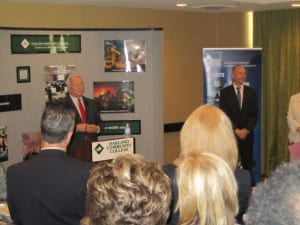
Siemens drives, HMI, remote operator pendants and PLC technology operate the system. Hahn utilizes the Siemens global support of its products, while sourcing many components locally, thus the term “glocal” was coined.
On this project, Hahn provided ThyssenKrupp the first of several cells, comprising six “valve stacker” modules for the pre-assembly, kitting and riveting of the shock absorber washers and piston rod assemblies, plus the gas and oil fill, welding and functional testing procedures. For each model produced, an assortment of washers with various profiles and dimensions is stacked on the piston, assembled and then the shock absorber body is filled with gas and oil, all to pre-programmed levels. The “recipe” for each model made is stored in the HMI onboard, which drives the individual module PLCs. At each station in the cell, an operator can instantly visualize the recipe in progress and enjoys the free movement around the cell, using the remote control pendant. As the model changeover is required, the master recipe exports the particular data requirements to each module, and then the ramp-up of the overall cell begins anew. Washers of various sizes and profile configurations are used for the buildup of each model produced, so the required components are brought to the assembly stations by a series of 4-axis ABB iRB 360 FlexPickers and ceiling mounted Epson G10’s, utilizing Selective Compliance Articulated (Assembly) Robot Arm (SCARA) technology. Functionally, the various commands are executed via the PLC, an S7-1500 from Siemens, which features seamless integration with the TIA Portal, as well as fully integrated onboard safety and security modules.
As Baines explains, “The setting adjustments are quite substantial for each damper product produced, so the load on the control system required strict monitoring and validation. There’s the master cell with six modules, including four valve stackers and two final assembly stations. Interestingly, half our design and assembly work was done in Germany and half was done here in Hebron, Ky., where we also did the final configuration of the control platform, runout and performance evaluations prior to delivery to ThyssenKrupp.” He noted the support provided by Siemens, both in Germany and local to his facility. Baines also cited the upgrade to the higher level Simatic S7-1500 PLC as a significant advantage for Hahn in the overall achievement of this project’s success. He particularly noted the safety and system security features, plus the fast response time and easy commissioning of this PLC platform for his team and TK personnel.
Greg Earle, VP for sales at Hahn, adds, “The Siemens TIA portal was a terrific engineering tool, as we were able to configure all the motor and drive components in a tag-based protocol for the individual slave PLCs and the master HMI. It was a very fluid connection process and, in the field, the operators enjoy the added benefit of movement, using the remote pendants provided with the system.” As each recipe is called up, he added, the changeover time is significantly reduced, compared to the previous systems in use at ThyssenKrupp. The single supplier for the new component feed systems is located in Germany, so the presence of both Hahn and Siemens there was a further advantage to TK on this project.
Vibbard of ThyssenKrupp comments, “Hahn was extremely competent and also price-competitive on this project, a very desirable combination in any business relationship. They were able to complete the build and execute the handshaking between the modules, with full verification on performance, error tracking, safety considerations, fault recovery and alarm alerts.” He noted an extra benefit on the operator screens was a dual language capability, so immediate access and troubleshooting could be accomplished by the engineering teams both in Germany and America.
In use, all the communications in the cell, whether from the robotics PLC, Siemens hardware and software systems or Hahn proprietary logic, are transmitted on a field bus to a single point of control and command, according to Vibbard, who cites this seamless protocol as a significant upside for our process engineers and maintenance personnel alike. “The assembly and testing procedures are all TCP/IP friendly, so the cell controls are easily accessible both by our team and remotely by Hahn for troubleshooting and faster resolution of any issues.”
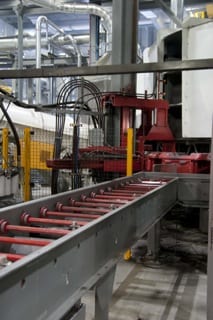
Washers of various sizes are stacked on a piston rod for assembly, with differing levels of air and oil fill to suit the specifications of the individual products at ThyssenKrupp; modular, programmable work cells provide great flexibility in production.
According to the official ThyssenKrupp description of the new shock absorber technology that partially drove the development of this project, “The new DampTronic® Sky damper (shock absorber) is a further milestone in resolving the conflict between driving comfort on the one hand – an aspect of particular interest in the premium segment – and the driving safety and agility of the car, on the other hand. In this new generation, two continuously variable valves adjust the damping force in each damper: one valve controls the rebound phase – i.e. the force that ensues when the wheel travels down – and the other controls the compression phase. Using the data it receives from the acceleration and wheel-path sensors, the control module of the suspension system can individually adapt the damping forces for each wheel within just a few milliseconds to eliminate the effects of rough road-ride conditions that may detract from the driving comfort for the passengers, while at the same time controlling the dampers in such a way that the chassis is stabilized to the best possible degree. Thanks to the use of two adjustable valves, the damper is also able to ensure that the damping force can be adjusted according to the skyhook principle even in the high-frequency spectrum of the wheel vibrations. By independently adjusting the extension and compression forces, the new ThyssenKrupp DampTronic® Sky damper constitutes the high-end system in the semi-active damper segment.”
The customer here, ThyssenKrupp, expects significant improvements in the production schedules with the Hahn Automation master cell on the floor at the facility in Hamilton, Ohio.
Baines concludes, “The relationship we established with and the solution we proposed to ThyssenKrupp would not have been possible without the assistance of the Siemens team, both here in our area and in Germany, supplying product, engineering know-how and controls expertise in both locations.”
A “glocal” success, indeed.
For more information on this story, please contact:
SIEMENS
Digital Factory
Factory Automation
5300 Triangle Parkway
Norcross, GA 30092
Phone: 770-871-3848
www.usa.siemens.com/drives
Attention: Hollie Davis, Sandra Tigert or Alisa Coffey
Or
HAHN AUTOMATION
3012 Kustom Drive
Hebron, KY 41048
Phone : 859-283-1820
www.hahnautomation.com
Attention : John Baines
Or
THYSSENKRUPP BILSTEIN OF AMERICA
8685 Bilstein Boulevard
Hamilton, OH 45015
Phone: 513-881-6394
www.bilsteinus.com
Attention: Fabian Schmahl or Dave Vibbard
About Siemens USA
Siemens Corporation is a U.S. subsidiary of Siemens AG, a global powerhouse focusing on the areas of electrification, automation and digitalization. One of the world’s largest producers of energy-efficient, resource-saving technologies, Siemens is a leading supplier of systems for power generation and transmission as well as medical diagnosis. With approximately 348,000 employees in more than 190 countries, Siemens reported worldwide revenue of $86.2 billion in fiscal 2015. Siemens in the USA reported revenue of $22.4 billion, including $5.5 billion in exports, and employs approximately 50,000 people throughout all 50 states and Puerto Rico.